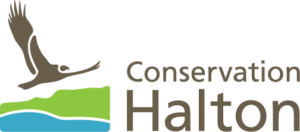Source Protection Questions and Answers
What is Drinking Water Source Protection?
Drinking water source protection is simply protecting the water resources such as lakes, rivers and groundwater that are used for drinking water from contamination or overuse.
Water is critical to all aspects of our lives. Protecting the sources of our water is important to ensure that there is enough clean, safe water for all our uses – now and in the future.
What are water sources?
In Halton-Hamilton Source Protection Region, our drinking water comes from surface water and groundwater. Lake Ontario is our surface water source and municipalities extend pipes into the lake to pump sufficient quantities of water. Aquifers, porous soil or rock that yield significant amounts of groundwater to wells, are the sources of groundwater tapped for drinking water. Municipalities, rural residents and rural businesses tap aquifers for drinking water.
Why is it important to protect sources of drinking water if we can just treat the water before it gets to our taps?
Justice O’Connor, in his report on the Walkerton Inquiry, identified the need for a multi-barrier approach as the best method to safeguard public health and ensure there is enough water for all. Protecting the source of the water is the first step.
Over two million residents in Ontario get their water directly from surface or groundwater sources and do not utilize treatment systems. Keeping pollutants out of our lake and groundwater helps to ensure that everyone has access to a clean supply of water.
Furthermore, treating water for drinking is very costly. As a result, conventional water treatment methods cannot always remove all hazardous chemicals. By keeping these chemicals out of the source water, the treatment systems have an easier job of cleaning the water for drinking.
Don’t we have an unlimited supply of fresh water in Canada?
We do not have an infinite supply of water on our planet. The water we use is recycled through the water cycle – the continuous movement of water on, above, and below the surface of the earth. If the water taking is at a faster rate than the water is replenished, then the water source will eventually be depleted and the taking is not sustainable.
What is the best way to protect source water?
We protect sources of water by understanding the natural processes acting on them and by managing the human influences. Water flows within watersheds and impacts upstream can affect water users downstream. Since surface watersheds are easily delineated, these are used for planning and protection purposes.
How are our sources of water threatened?
Both the quality of our water and the amount available can be threatened by various human activities and natural conditions. The drinking water source protection program only attempts to manage the human activities. Some of the human threats to our drinking water include:
- Irresponsible land use activities which contaminate our water.
- The overuse of water that causes the amount of water available at the source to decline.
- Urban development can make it difficult for water to soak into the ground to replenish groundwater sources. When this happens, water flows across the surface of land and groundwater levels can decline.
- The changing climate may result in a warmer Earth’s atmosphere with reduced amounts of water available in lakes, rivers and streams due to reduced precipitation and increased evaporation.
What is a source protection plan?
A source protection plan is a management strategy designed to minimize the impact that human activities have on the quality and quantity of our drinking water sources.
Source protection plans contain policies that address the threat activities identified in watershed assessments. The assessments characterize the geology, physical and human geography, municipal water sources and systems, and identify sensitive areas where water resource supply and/or quality is threatened, provide scientific data about the quality and supply of current water resources, and include mapping and computer projections about areas requiring protection.
Additional questions can be directed to: sourceprotection@hrca.on.ca



